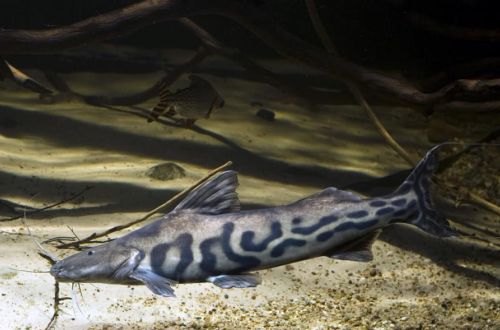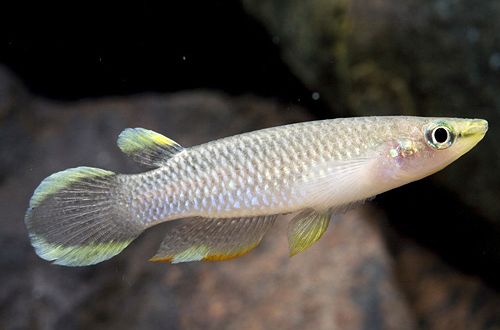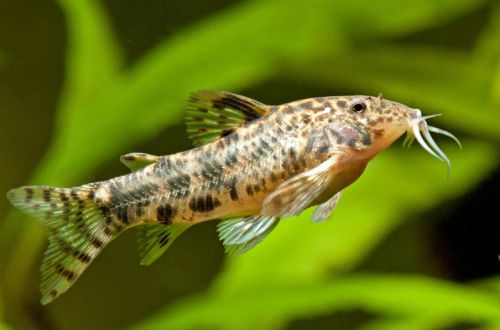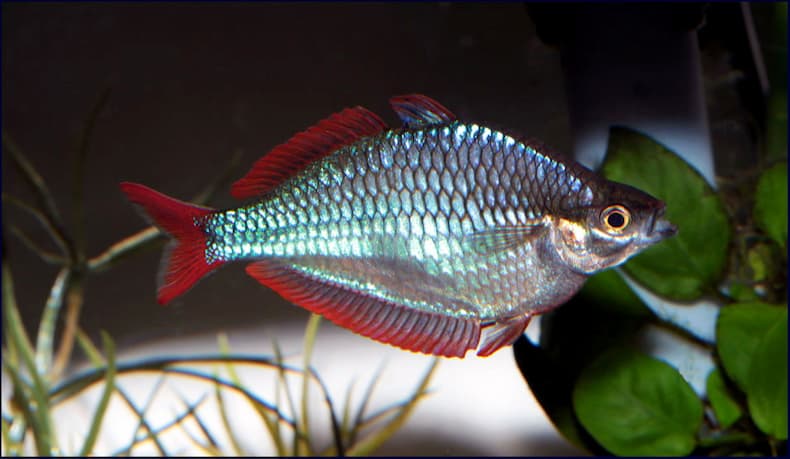
neon iris
Melanothenia neon or Neon iris, also known as the small iris, scientific name Melanotaenia praecox, belongs to the family Melanotaeniidae (Rainbows). A relatively small schooling fish with a beautiful neon glow in color. Easy to keep and breed, it gets along well with many other tropical species, making it a good choice for the general freshwater aquarium.

Contents
Habitat
It comes from the island of New Guinea from the territory of modern Indonesia. Inhabits the basin of the Mamberamo River. It occurs both in the mainstream and in numerous tributaries, as well as in the surrounding tropical swamps. Fish prefer regions with dense aquatic vegetation, often living near flooded trees, shrubs and other snags.
Brief information:
- The volume of the aquarium – from 60 liters.
- Temperature – 23-28°C
- Value pH — 6.8–7.5
- Water hardness – soft to medium hard (5-15 GH)
- Substrate type – any
- Lighting – subdued / moderate
- Brackish water – no
- Water movement – weak/absent
- The size of the fish is up to 8 cm.
- Food – any food
- Temperament – peaceful active
- Keeping a flock of at least 6-8 individuals
Description
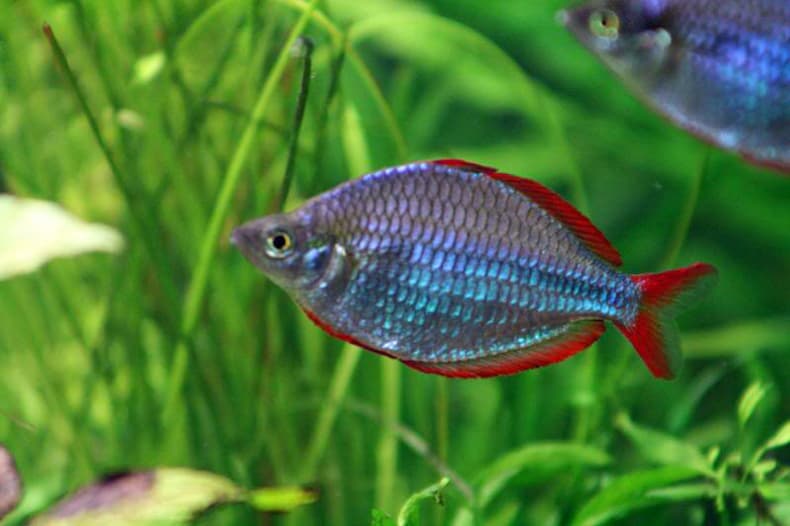
Adults reach a length of about 8 cm. The color is bluish with a neon effect. Such a neon glow is only achieved with diffused light, for example, in aquariums with floating plants. The fins and tail are red.
Sexual dimorphism is weakly expressed. Males are only slightly larger than females, and there are more red shades in color.
Food
Melanothenia neon is unpretentious to the diet. Accepts most popular foods (dry, frozen, live). It is advisable to combine different products, for example, flakes and granules to serve together with bloodworms or brine shrimp. This diet will allow the fish to show their best colors.
Maintenance and care, decoration of the aquarium
The optimal size of the aquarium for a flock of 6-8 fish starts from 60 liters. The design uses a variety of rooting and floating plants arranged in groups to preserve open areas for swimming.
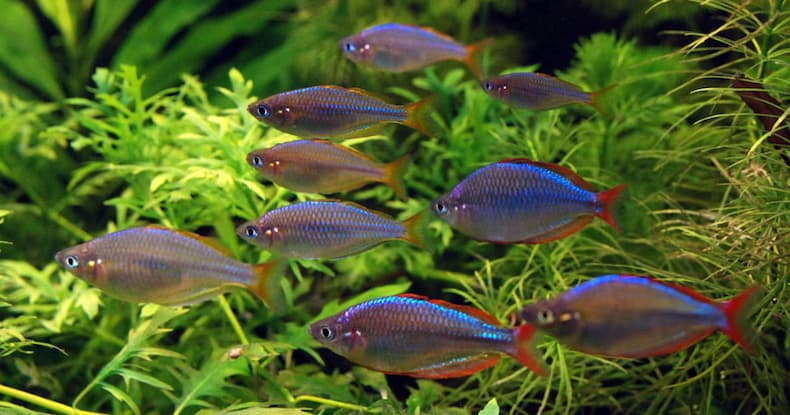
The fish does not respond well to bright lighting and excessive water movement, so equipment should be selected based on these features. Another important factor is the quality of the water. A productive filtration system and regular replacement of part of the water with fresh water will ensure suitable conditions for keeping.
Behavior and Compatibility
The neon iris is considered a peaceful and very active fish. Compatible with other species of comparable size and temperament. However, they can cause inconvenience to slower neighbors in the aquarium. The content is flocking, at least 6–8 individuals of both sexes. It has been noted that males tend to show brighter colors in the presence of potential rivals. With this (coloration), they seek to attract the attention of females.
Breeding / breeding
Raduzhnitsy breeding is possible both in general and in a separate spawning aquarium. Favorable conditions for the beginning of the mating season are achieved at a temperature of 26–28°C, in slightly alkaline (pH 7.5) water of medium hardness. The design should contain thickets of small-leaved plants or their artificial analogues, among which eggs will be laid.
Spawning lasts about 2 weeks, during this time the female will lay several dozen eggs daily, and the male will fertilize them. Parental instincts are not developed, therefore, after the end of spawning, the fish do not show any interest in future offspring. If breeding was carried out in a common aquarium, then it is advisable to move the eggs to a separate tank with identical conditions. Otherwise, there is a great risk of them being eaten by other fish. In the absence of a spawning aquarium, dense clusters of floating plants can be purchased, which will serve as a reliable refuge for fry.
The incubation period lasts about 7-12 days. In the first days of life, fry are able to eat only microscopic food, for example, ciliates. After a week, you can serve brine shrimp nauplius or specialized powdered food for fry. It is worth noting that it is rather problematic to feed the Rainbow fry in a common aquarium than in a separate spawning one.
Fish diseases
Health problems arise only in case of injuries or when kept in unsuitable conditions, which depresses the immune system and, as a result, provokes the occurrence of any disease. In the event of the appearance of the first symptoms, first of all, it is necessary to check the water for the excess of certain indicators or the presence of dangerous concentrations of toxic substances (nitrites, nitrates, ammonium, etc.). If deviations are found, bring all values back to normal and only then proceed with treatment. Read more about symptoms and treatments in the Aquarium Fish Diseases section.
Source: FishBase



